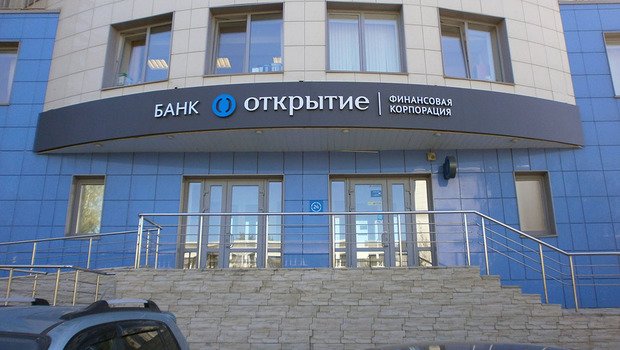Otkritie Bank needs extra bailout money from Central Bank to finish recovery
Otkritie, one of the three private banks rescued by the regulator last year, is supposed to merge with other problem banks. The bank asks an additional bailout from the Central Bank but also expects an increase in corporate and personal deposits this year. Meanwhile, people are less and less willing to entrust their savings to the national banking system, while businesses continue to experience difficulties with refinancing or repayment of their debts.
Otkritie Bank needs more capital from the Central Bank, reports Reuters citing the bank's new CEO Mikhail Zadornov. Otkritie has already received 456bn rubles ($8bn), 42bn of which were designated for its pensions funds and 44bn for Rosgosstrakh. The regulator intends to merge Otkritie with another problem lender, B&N Bank, but the merger requires the financial rehabilitation of the participants. B&N Bank is also expected to receive more money from the Central Bank's Banking Sector Consolidation Fund, as well as Trust Bank, owned by Otkritie.
The Central Bank has planned to spend around a trillion rubles to bail out Otkritie, B&N and another major lender Promsvayzbank. The merged Otkritie and B&N banks are supposed to be sold in a stock market flotation, while Promsvayzbank is meant to serve the country's defence sector. According to Zadornov, the decision whether to convert Rost Bank, a subsidiary of B&N Bank, or Trust Bank, owned by Otkritie, into a ''bad bank'' that will take on bad loans from healthier banks should be made in March.
Otkritie's business plan for 2018 envisages a significant increase in retail lending and more loans to small- and medium-sized businesses. The bank also plans to make new loans of up to 160bn rubles in 2018. On the other hand, Otkritie expects to get 125bn rubles of loan repayments and a 30% growth in corporate and individual deposits.

Meanwhile, the Russian banking system faced a massive outflow of personal deposits last month. Although a reduction in individual deposits is considered to be a usual January phenomenon, it has been very massive this year. 453bn rubles were withdrawn from bank accounts in the first month of 2018, compared to 155bn rubles in January 2017. The monthly polls conducted by inFOM for the Central Bank showed that the number of people who had personal or family savings reduced from 39% in August 2017 to 31% in December 2017.
Those who have money left might prefer to keep it at home because of falling interest rates, experts of the Russian Higher School of Economics (HSE) consider. At the beginning of February, maximum annual interest rate on ruble deposits in the top 10 Russian banks amounted to 6,946%. It has been the first time in history that the figure falls below 7%. The HSE's experts also noted that only 80,3% of the population's money was kept on the deposits with a strictly specified repayment period, which is also a very low result that ''demonstrates the unwillingness of the population to invest their funds for a period on the existing rates''.
The inflow to corporate accounts in January amounted to 139bn rubles. At the same time, the deferral on corporate loan repayments increased sharply to 111bn rubles. In aviation and construction, 24% of all loans were overdue. The companies continue to experience difficulties with refinancing or repayment of their debts due to unfavourable economic conditions, Raiffeisenbank's analysts consider. They warn that the stagnant economy and lower interest rates will affect adversely the profitability of credit institutions.